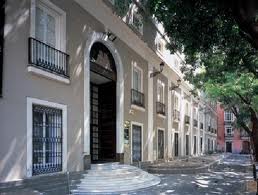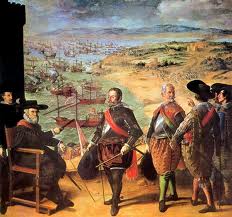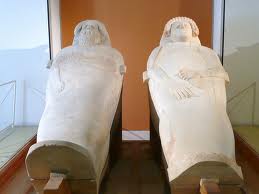Cádiz Museum

Where: Plaza de Mina, s/n., 11004
Opening hours: Tuesday from 2.30 pm to 8:30 pm, Wednesday to Saturday from 9 am to 8:30 pm, Sunday and holidays from 9:30 am to 2.30 pm. Closed on Mondays, January 1 & 6, May 2, December 24, 25, 25 & 31
If you want more information about Cádiz and activities in the city, check out this Cádiz city guide!
The Cádiz Museum
If you would like to learn Spanish in Cádiz we recommend visiting this museum and the many others that this Andalucían city has to offer.
The origin of the Cádiz Museum, like many other state Spanish museums, dates back to 1835 when the Home Office, fronted by Juan Álvarez de Mendizábal resolved to confiscate huge amounts of ecclesiastic property, including valuable art collections that passed on to the state's hands. A series of paintings from different cloister convents helped to form the first collection , including the

Zurbarán series from la Cartuja de Jerez de la Frontera. In the meanwhile, during the 19th century the Fine Arts academy collected works by the blooming Cádiz school of painting, which contained echoes of the end of neoclassicism, romanticism, genre painting and historical depictions.
The incidental discovery of a male Phoenician anthropoid sarcophagus, found in the ground of a shipyard in 1887, was the starting point of the archeological collection, which in the end justified the creation of an archeological museum in Cádiz. The collection was enhanced with other pieces found in further diggings at the time, together with private donations and the objects gathered by the Comisión Provincial de Monumentos Históricos (Historical Monuments Provincial Commission).
The museum has been lodged in different buildings through the years. It was finally settled in its current venue, in Plaza de la Mina, in 1935, only occupying the ground floor, as it shared the structure with the Fine Arts Academy (though they were considered separate museums, with separate directors and staff). In 1970 both museums were joint to form the current Cádiz Museum, including an ethnographic section to the Fine Arts and Archeological departments.
In 1980 an important restoration of the building took place, headed by architect Javier Feduchi. Up to now, two phases of the project have been finalized and a third one is on the agenda.
The Collection
The Archeology Section

The Archeological collection of the Cádiz Museum encompasses 8 rooms which allow to tour prehistory, ancient times and the Middle Ages in Cádiz. It's possible to take a chronological tour of the museum or to visit the different collections that stand out because of their singularity, such as those dedicated to Roman or Phoenician times. There are also some thematic visits proposed by the museum:
- Archeology and the Sea: from reproductions of paintings from Laja Alta, which depict the arrival of a fleet of Phoenician ships, to navigation in the Bay of Cádiz, to the maritime trade through amphoras and loads in Roman ships.
- Death through archeology: from prehistory to the first Neolithic burials, Phoenician, Roman and Paleo-Christian mortuary rituals and much more.
- Personal Adornment: from prehistoric objects to a collection of Phoenician jewels, from the necropolis in Cádiz to personal care items from Roman times.
- The Roman Emperors: a walk through the history of Rome through portraits, coins and imperial inscriptions, from Julius Caesar to the decline of Rome.
- Gods and Heroes: a beautiful itinerary from the East and West, including Cyprus, the Greek Islands and Sicily.
The Fine Arts Section
The Fine Arts collection of the Cádiz Museum also consists of eight rooms that encompass paintings from the 14th to the 20th centuries. The collection is largely structured chronologically, although there is also regard for the quantity and quality of the works exhibited. One room is dedicated to the 14th century, three to baroque art, including paintings by Murillo, Alonso Cano and other Spanish greats. Two rooms are devoted to the 19th century and two more to the 20th.
The 19th century rooms contain historical and genre paintings, including works by Andalucían artists, such as García Ramos and Gonzalo Bilbao, among others.



